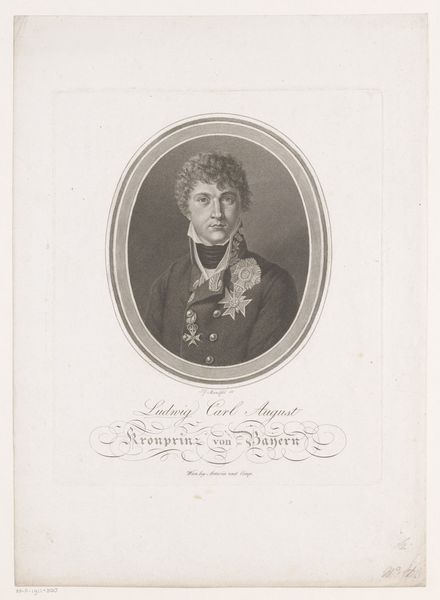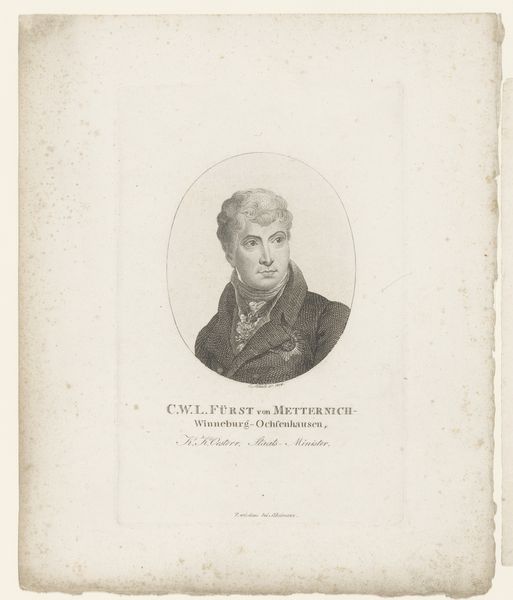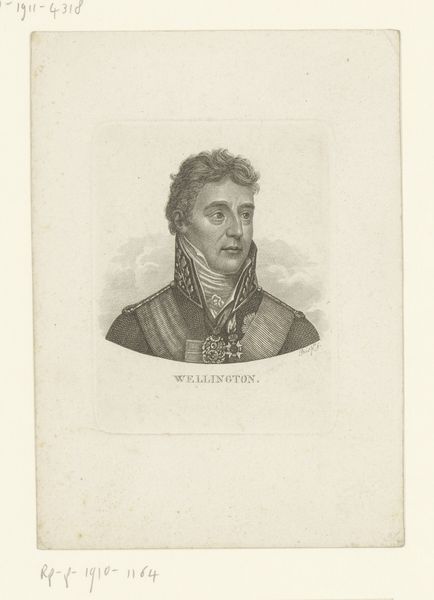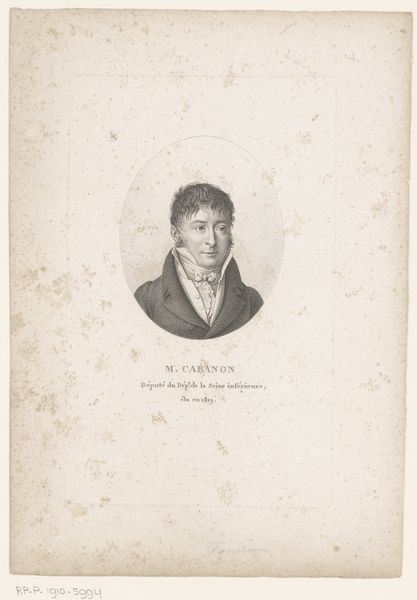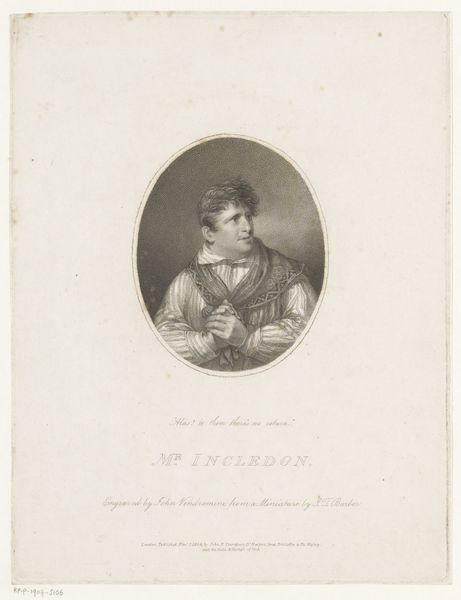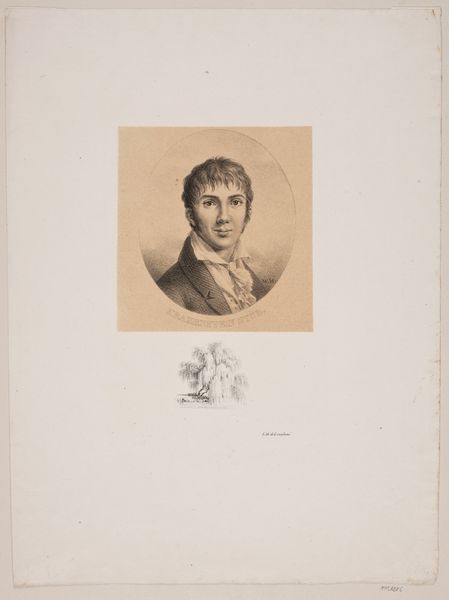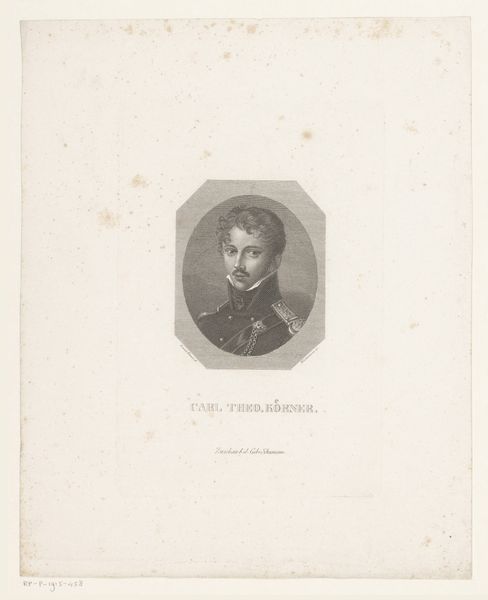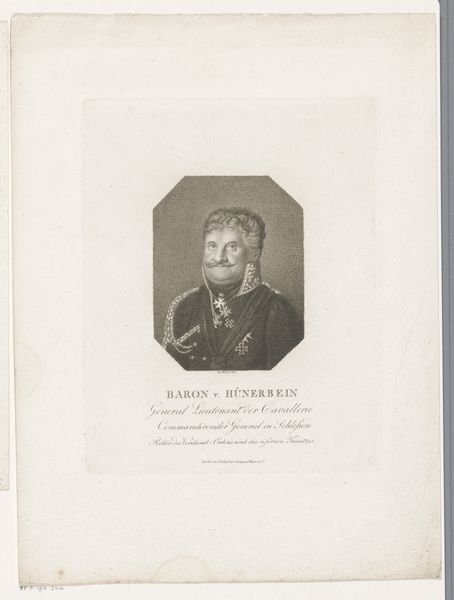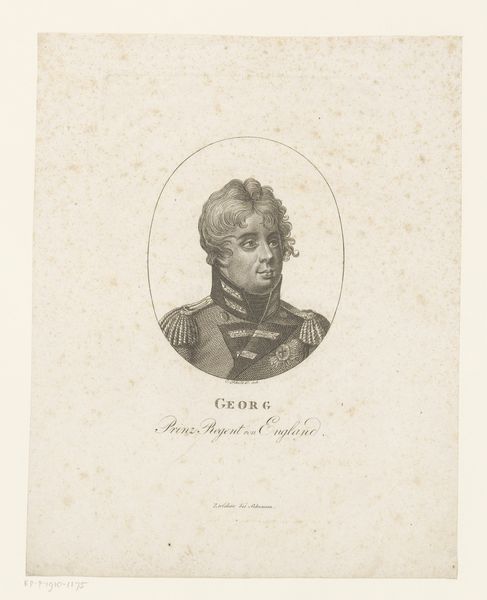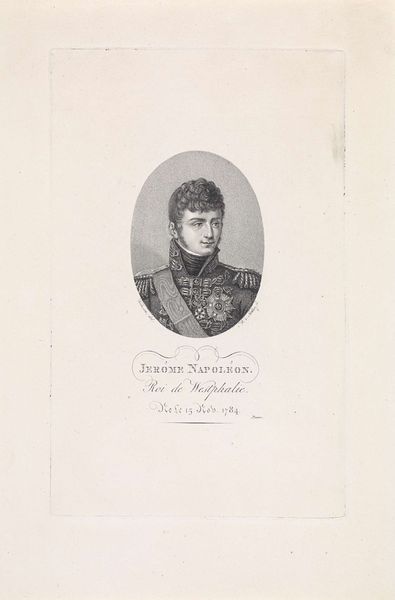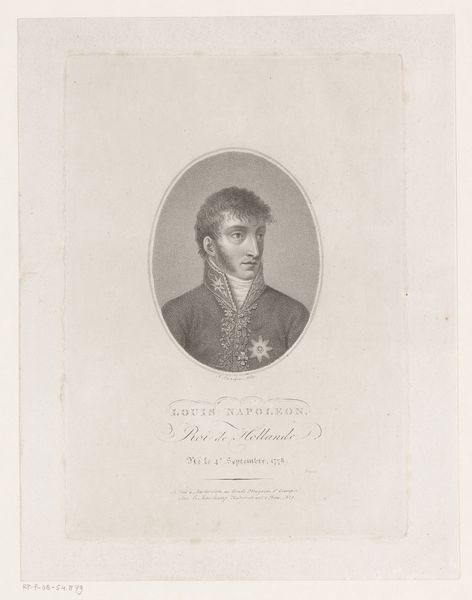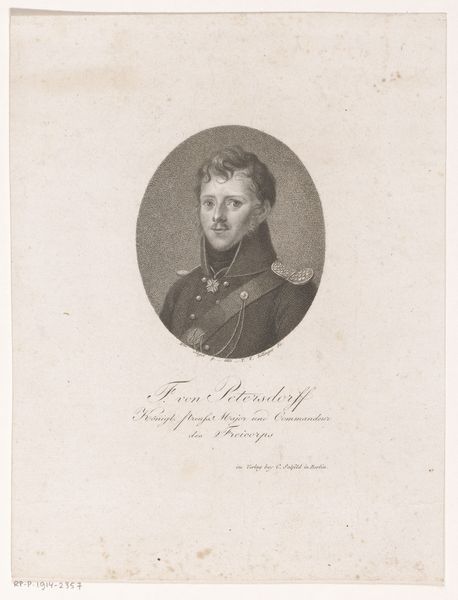
drawing, pencil, graphite
#
portrait
#
pencil drawn
#
drawing
#
neoclacissism
#
light pencil work
#
pencil sketch
#
pencil
#
graphite
#
academic-art
Dimensions: height 192 mm, width 133 mm
Copyright: Rijks Museum: Open Domain
Editor: Here we have a graphite drawing, "Prinz Christian von Dänemark," created by Christian Schule in 1815. It has an austere feel, very controlled. What catches your eye in this portrait? Curator: Immediately, I’m struck by the negotiation of power within the work. Look at the date: 1815, right after the Napoleonic Wars. The portrait isn’t simply about depicting Prince Christian; it’s about reasserting dynastic power in a post-revolutionary world. Editor: So the controlled lines, the formality... that’s all intentional? Curator: Precisely! The Neoclassical style deliberately recalls the order and perceived stability of the classical world. The meticulous detail in the uniform—the medals, the epaulettes—signifies authority. It's not just a drawing of a man; it’s a statement of legitimacy and a calculated image meant to project power and strength in a period of intense political and social upheaval. Editor: Interesting. It makes you think about who this image was for and what response it aimed to elicit. Were images like this typically consumed by the Danish aristocracy? Curator: Absolutely, portraits like these functioned as visual propaganda within elite circles, and served to establish an idea of hereditary legitimacy to its constituents, even if that legitimacy was in crisis. Editor: I had not thought about portraiture that way before. I always looked at portraits for an idea of likeness. Thank you. Curator: And I find that our talk helps look at it with a broader lens. Thank you!
Comments
No comments
Be the first to comment and join the conversation on the ultimate creative platform.
